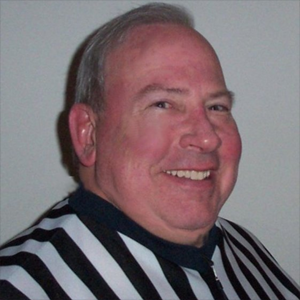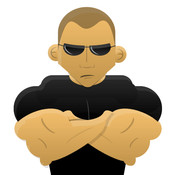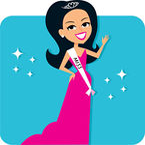
Rndballref
20 Years Experience
Chicago, IL
Male, 60
For twenty years I officiated high school, AAU and park district basketball games, retiring recently. For a few officiating is the focus of their occupation, while for most working as an umpire or basketball referee is an avocation. I started ref'ing to earn beer money during college, but it became a great way to stay connected to the best sports game in the universe. As a spinoff, I wrote a sports-thriller novel loosely based on my referee experiences titled, Advantage Disadvantage
If your hands are on top of the ball pushing it to the floor it is double dribble. If the ball drops and you pick it up it could be a muff, and if you lift one foot the other will be the pivot. Then you can dribble.
In NFHS rules, a non-free thrower cannot enter the lane until the ball hits the rim or backboard. Assuming there was no harsh contact and that the player blocking out entered after the ball hit something (or went in) this should be a no call.
In NFHS rules, the three second restriction is lifted when a legitimate try for the basket goes up. Note that it does not say "when the ball hits the ring". So the first part of your question's answer is no, there is no three second violation because once a try goes up there is no team possession anymore. Secondly, in NFHS rules any player can retrieve an air ball shot as long as it was deemed a legitimate try. Once retrieved, team and player possession are reestablished, and he gets a new 3 second count if he is still in the lane.
A single flagrant foul results in a disqualification in NFHS rules.
3D Games Developer/Programmer
 How does 3D fool the human brain into seeing an extra dimension?
How does 3D fool the human brain into seeing an extra dimension?
Bouncer
 What's the best way to "get in good" with the bouncer at the door?
What's the best way to "get in good" with the bouncer at the door?
Beauty Queen
 Is there truth to the stereotypes of “pageant parents?”
Is there truth to the stereotypes of “pageant parents?”
There is a long running example of this in previous case books from NFHS: "If the scorer signals the horn when the ball is live, the officials shall ignore the signal if a scoring play is in progress. Otherwise the officials may stop play to determine why the horn was sounded."
In your scenario, count the basket, then blow the whistle (because a scoring play was going on while the horn was originally sounded.
True. It is the same halt in advantage as an intentional foul which stops a breakaway. The rules try to take care of this by awarding 2 free throws plus the ball. However, I agree. Although I never ran into an intentional T to stop a breakaway, it would be good practice to let the player finish the layup or jump shot and then call the T.
Here are the screening rules:1) when screening a stationary opponent from the front or side, the screener may be anywhere short of contact.2) when screening a stationary opponent from behind the screener must allow the opponent one normal step backward3) when screening a moving opponent the screener must allow the opponent time and distance to avoid contact. The speed of the player to be screened will determine where the screener may set up. This may vary and may be one to two normal steps.4) when screening a player moving in the same direction, the player behind is responsible for all contact.
-OR-
 Login with Facebook
Login with Facebook (max 20 characters - letters, numbers, and underscores only. Note that your username is private, and you have the option to choose an alias when asking questions or hosting a Q&A.)
(A valid e-mail address is required. Your e-mail will not be shared with anyone.)
(min 5 characters)
By checking this box, you acknowledge that you have read and agree to Jobstr.com’s Terms and Privacy Policy.
-OR-
 Register with Facebook
Register with Facebook(Don't worry: you'll be able to choose an alias when asking questions or hosting a Q&A.)